In addition to tattooing onto fake skin, i was also advised to practice tattooing onto fruit skin, which more closely resembles the sensation of tattooing real skin.
A combination of gala melons and bananas where used, to provide a variety of textures. I was informed that the sensation of tattooing melon skin shared similarities to the sensation of tattooing elderly skin or skin that had been subject to harsh weather conditions, and toughened as a result.
The initial practice was executed on bananas and completed during the time that lettering practice was also being practiced. Some script that was originally drawn by studio artist, Dan Hartley, was applied as a stencil, but proved difficult due to the shape of the banana. It was concluded that opting for freehand would be more useful, as the design could accommodate for the shape.
The word ‘Saskia’ was applied multiple times on the banana, and attempted as a tattoo with varying degrees of success. Lettering and text are often jobs assigned to beginner artists, which was the rationale behind the use of text for the exercise. The emphasis on drawing text, and not writing it became true of both tattooing it and designing it, with no distinction between processes employed between tattooing words and pictures.
A free-hand approach to the drawing on melon skin was also applied, as the texture of the melon skin would not allow for a stencil to be transferred. In contrast to the banana skin in which the pressure of the machine was very sparse, the pressure applied to the melon skin was slightly firmer, almost carving out the area making contact with the needle and replacing it with ink. The designs drawn onto the melon skin where from Sailor Jerry flash, and collectively resembled the appearance of traditional tattoos on a limb, which are characteristically seemingly randomly placed.
Influenced by some of the works produced during the process of self-initiated drawing tasks the next iteration of tattooed banana skin was executed. Some initial attempts at lettering where attempted, following on from the script exercises previously discussed. The outcome appeared to demonstrate technical skill development, when contrasted to the previous tattooed banana. This was in part due to the flatter surface of the skin, as the edible part of the banana was discarded, providing a flatter surface to work on.
The visual properties of these pieces could be described as adhering to aspects of the tribal taxonomy of tattooing while also adopting elements of the avant garde. Investigations of such a nature initiated the question of if new tattoo taxonomies may be developed as a result of reflective practice? If so, when may these be appropriate, and what are their defining characteristics? As a preliminary frame of reference, the term ‘PsyTri’ was coined to describe the psychedelic tribal aesthetic of the pieces.
These pieces where created without the use of a stencil or freehand, with the design being tattooed directly onto the surface of the skin. This approach allowed for an element of spontaneity and flow to be present in the design, that would be restricted by the traditional approaches to tattooing of following a precise guide.
Adam McDade
Apprentice Tattooist and PhD Research Student
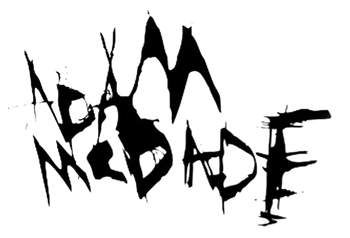
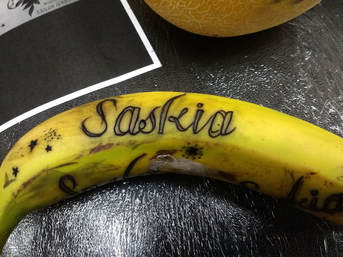
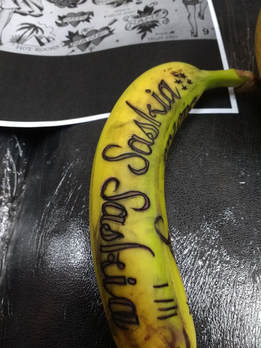
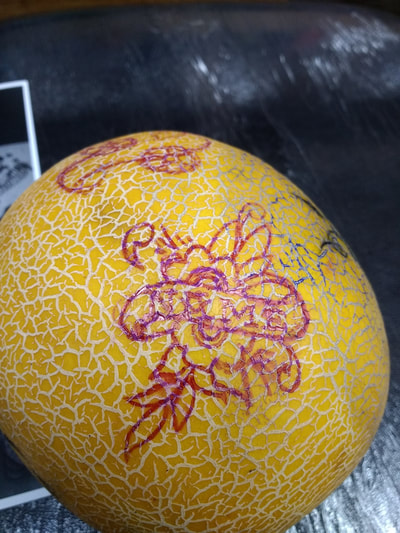

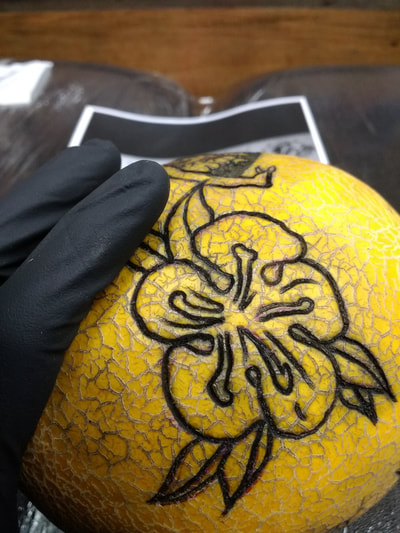
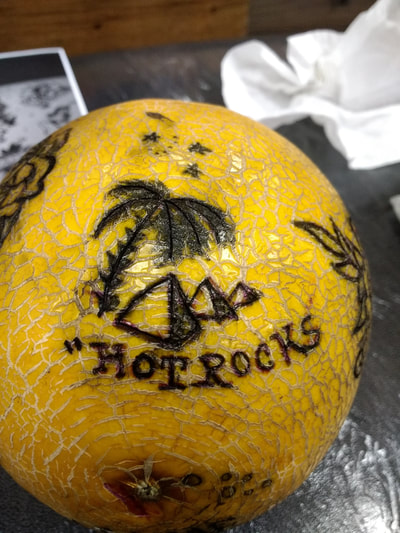
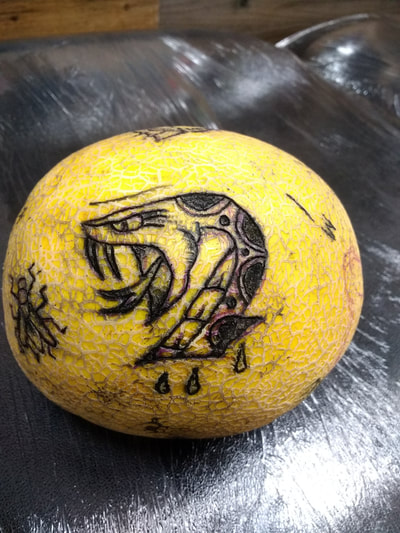

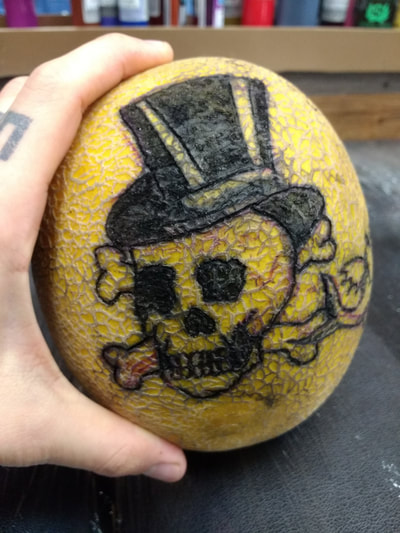





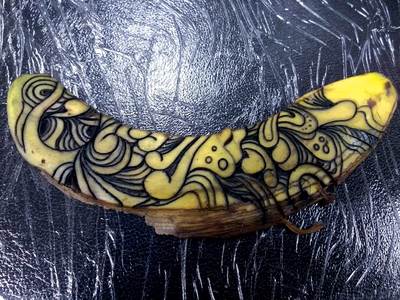


 RSS Feed
RSS Feed
